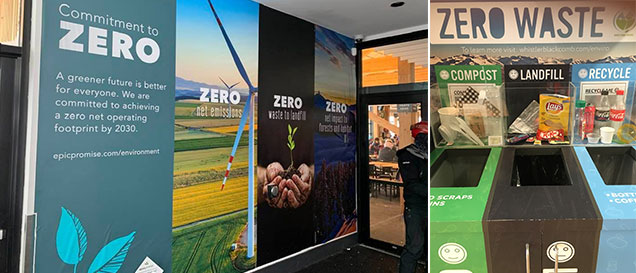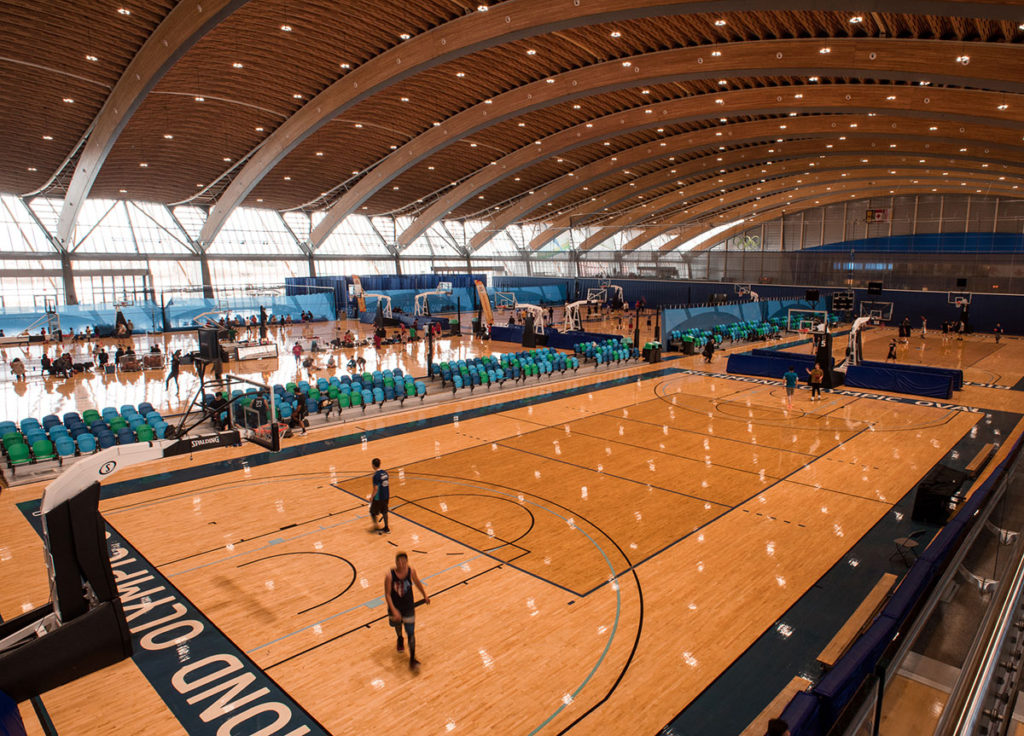Client
Whistler Blackcomb
Location
Whistler, BC
Service Areas
About Whistler Blackcomb
WB has been long considered a leader in sustainability, with a goal of Zero Operating Footprint since 2008. It’s a vision that would not be possible without the leadership of Arthur De Jong (Senior Manager of Planning and Environment) and Allana Williams (Senior Manager of Energy Planning and Sustainability), an engaged employee base, and an organizational culture that believes in the importance of waste reduction and energy conservation.
In 2016, WB was acquired by Vail Resorts and adopted their Epic Promise; a pledge for zero net emissions, zero waste to landfill and zero net operating impact on forests and habitat. The vision is modelled on Whistler Blackcomb’s original objectives but with one significant distinction: a target for the year 2030.


Allana’s Journey
It all started with a ski holiday when Allana noticed that there wasn’t a recycling program at WB. She connected with Arthur and offered to perform waste audits in exchange for lift tickets. It was the perfect opportunity for Allana to combine her interest in business with her passion for sustainability and her love of the outdoors. After four years of sorting garbage, Allana saved enough on garbage fees to create her position as Environmental Coordinator.
Waste reduction became a way for Allana to get her foot in the door as it was highly visible and easy for everybody to get involved in. From there, her enthusiasm spread and WB reduced their waste to landfill by 72% from a 2000 baseline. These visible efforts led to the “invisible” opportunities and Allana soon discovered the potential savings of energy management after connecting with her colleagues.
Results
With organizational-level support, strategic energy management services were enlisted, and a plan was formulated to meet the resort’s energy management goals. Energy audits revealed opportunities for enhancements at the various lodges and operations. These included: heating systems redesigns, lighting upgrades and retrofits, variable flow pumping, and HVAC and lighting control optimization. The resort has saved more than 4.6 GWh of electricity per year as a result of these initiatives.
The resort continues to manage several programs to reduce its GHG emissions and energy use by including the introduction of an idling policy, lower-emission snowmobiles, electric vehicles and charging stations. WB is also testing hybrid snow grooming equipment, managing a popular White-Bike shared-use bicycle program and a longstanding carpool program with over 65 poolers using eight company vehicles.
Furthermore, the Epic Promise is now entrenched in decision-making processes at the executive level. Strategic partnership agreements do not get signed without reviewing this component on sustainability.

Key Learnings
These were some of the key learnings Allana revealed during the day-long workshop*:
- Make communication a key priority. This is twofold: 1) communicate effectively to employees about specific actions to take and also 2) gather feedback from stakeholders in a way that will encourage them to provide meaningful insights
- WB did this through focus groups and realized there was little awareness of their sustainability initiatives; this was their cue to tweak their communication strategy.
- When stakeholders felt their voices were heard, it was very helpful for getting buy-in; they want to know what they can do and how they can take it to their departments.
- Track progress through specific measurements before, during and after an initiative.
- For every behavior that is encouraged, make sure to document the process so that the change is very visible and measurable. People will be motivated by the change they see.
- Form your team strategically
- Identify which functional areas within the organization can benefit from energy efficiency and collaborate with them. “We realized we wanted the same thing as the electricians and maintenance staff: less energy use and more efficient equipment and systems that require less maintenance.”
- Identity who your key influencers will be (often, this is not management) and get them on your team.
- Engage Management
- This will allow the entire organization to commit to goals, from target setting to capital and human resource distribution.
- Through the BC Hydro Energy Manager program, Allana was able to leverage a formal quarterly reporting structure which gave her visibility in front of the senior leadership team to gain traction and engagement at the executive level. “Once leadership caught on, it became contagious and everyone wanted to be a part of it.”
- Ensure the communication to leadership “speaks their language”; proposals should align to priorities and core values.
- Introduce people to the culture early
- WB incorporated sustainability into orientations for new and returning employees at the start of the season. The team made sure to tell the story of why we do the things we do.
- Sustainability ambassadors did a roadshow of customized presentations to all the departments to give each area an understanding of how they can make an impact.
- Weave sustainability into performance metrics for employees
- This ensures that everyone has a sustainability goal and success factors that they are being measured against.
